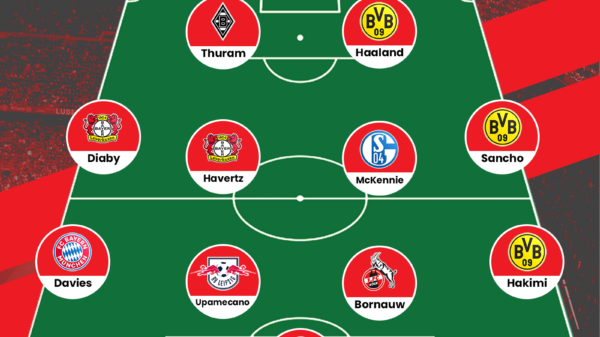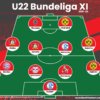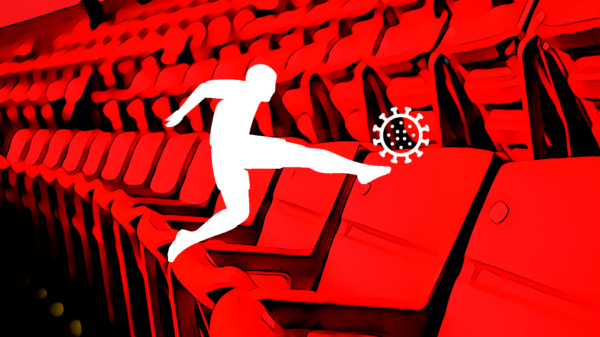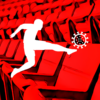On Saturday, while the world braced itself for a Clasico, the biggest derby in Germany took place at the Veltins Arena in Gelsenkirchen. The two sides of the Ruhr district, Schalke 04 and Borussia Dortmund faced off in a match that has as much history as it does animosity. Coming into this game, Schalke sat in 5th place after a bit of a chaotic start to the season. Dortmund on the other hand were in second, and a win could have taken them to the apex of the Bundesliga.
Schalke started with a 4-2-3-1. At the back, Uchida was moved to right back, and Howedes to the middle. Along side Howedes was the talented Joel Matip, and Kolasinac was the left back. In the midfield, Aogo and Neustadter were the chosen ones, behind Fuchs on the left, Prince in the middle, and Draxler on the right. Adam Szalai was the lone striker.
Dortmund made only one change to their line up from Tuesday night, as Aubameyang came into the starting 11 in place of Kuba. Aside from that, it was all the same players in the usual 4-2-3-1.

via our very own Tactics Creator App. Click here to try it.
Dortmund Pressing
Dortmund began the game with their usual pressing high up the pitch, and won the ball back from Schalke quite a few times in their own half. However, the effects of the game on Tuesday were quite evident. Therefore, Klopp adapted and made his team sit a little bit deeper, and changed the style of pressing. Usually, Dortmund are quite aggressive in their pursuit of the ball, but today, the aggression was taken away, and the focus was shifted to closing down the spaces that Schalke could pass into. The midfield was especially flooded, and this was contributory to Schalke being unable to build up play effectively. Dortmund made an excellent 23 interceptions in the game.

BVB interceptions. 12 of them were in midfield.
via squawka.com
Nervy Start
Perhaps it was the occasion, or maybe it was the delay at the start, or maybe it was both, but neither side was able to pass the ball well. In the first half an hour or so, both the sides had a pass completion rate of around 70%. The players seemed a bit nervous with all those goings on, and neither side, especially Schalke, was unable to pass the ball at a good rhythm. This all changed with Dortmund settling first, and completing a good move for Aubameyang to score.
MORE: SCHALKE VS DORTMUND STATISTICAL INFOGRAPH
Schalke Attacks
While going forward, Schalke wanted to try and pass the ball between the Dortmund full backs and centre backs. This strategy was used because Dortmund like to get their full backs forward, and hence leave space behind them. In order to do so, Schalke got their full backs to run forward as much as possible, and their midfielders really narrow. Essentially, they needed to do this, because having three left backs on the left hand side necessitated the generation of attacks from the right hand side. So Neustadter and Uchida got forward a lot more than their counter parts to support Julian Draxler, who also began on the right. The plan was to attack from the right, and keep the left side sealed up against Aubameyang.
Football Blogging Awards: Click here and vote for us in the “Best New Football Blog” Category
Frankly, this tactic wasn’t very successful, as the team was a bit unbalanced and failed to really threaten Dortmund. The build up of the attacks wasn’t quick or effective. This changed in the second half. Prince was moved to the right hand side from where he attempted to send cut backs into the box. Draxler was moved briefly into the middle, and then to the left to provide a bit of attacking thrust there. In the middle was the talented young Max Meyer. The 18 year old came on as a substitute and took the game to Der BVB. He completed 7 dribbles in his time on the pitch, the most of all players in the game. He was able to link play a lot better than Prince, and this led to the brief revival for Schalke in the second half.

Uchida getting forward down the right.
via squawka.com
Schalke Suffering in Midfield
One area where Schalke really struggled was the midfield. They just couldn’t gain control of the ball here, and almost none of their play came from this region of the field. This became a problem because all the build up play then came from one side, and hence lacked effectiveness. This essentially happened because of the lopsided nature of the Schalke team going forward. Aogo, Kolasinac, and Fuchs are all capable of playing at left back, and they were quite focused on the battle with Aubameyang and Groβkreutz. On the other side, Neustatder and Uchida were getting forward very often to compensate for the lack of thrust on the left. They were going to far forward to be useful passing options, and the Dortmund midfield, which was very content to sit back and stop the Schalke passes made sure the attacks were ineffective. The fact that they were able to dominate the midfield meant that had a good platform to launch their attacks, and the likes of Sahin and Mkhitaryan really dominated the game.
The No. 10 Role
The difference between the two midfields was demonstrated by the contrasting performances of their No. 10’s, and the huge effect this had on the outcome of the match. For large parts of the match, Prince, who began in that role, couldn’t get in the game. When he did, he lacked the touch or the composure to pick holes in the Dortmund defence. The only player to really make a difference in that position for Schalke was Max Meyer. The importance of this player who linked the attacks was seen during the brief period that Schalke dominated during, thanks to Meyer. It eventually culminated in a goal for him.
By contrast, Dortmund were able to create a good platform for Henrikh Mkhitaryan to perform and conduct the counter attacking transition. The Armenian rewarded this with two good assists, eventually proving to be the difference maker.
Conclusion
In a big derby, Dortmund decided to take it calm, and this approach was rewarded with three goals, all coming from quick counter attacks. Schalke were a little disjointed, and needed to keep players like Draxler and Meyer on the ball for longer. Perhaps Keller might have been rewarded with more if he had started Meyer instead of keeping his left side so defensive, but that is only retrospective speculation.
Over to you! That was our analysis the clash, was there anything particular that you (tactically) noticed? Let us know by dropping a comment below.
Make sure you follow us on Twitter @OOTB_football and like us on Facebook. We’re on Google+ and Tumblr as well for those interested.
CLICK HERE TO READ OUR OTHER TACTICAL ANALYSES
- Analysis: Are Chelsea’s pressing issues a concern? - October 5, 2020
- Has Financial Fair Play Been Worth It? - August 27, 2020
- Tactical Philosophy: Frank Lampard - May 20, 2020

























































